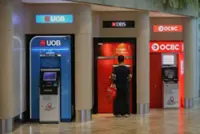People walk in to the headquarters of the European Central Bank (ECB) in Frankfurt am Main, western Germany, past a giant Euro logo on April 17, 2025 ahead of the Eurozone's monetary policy meeting. (Photo by Kirill KUDRYAVTSEV / AFP)
Stanford (California): The European Central Bank (ECB) needs a “steady hand” and mustn’t lower borrowing costs too much as inflation could turn out to be higher in the future, executive board member Isabel Schnabel says.
“By keeping interest rates near their current levels, we can be confident that monetary policy is neither excessively holding back growth and employment, nor stimulating it,” she said.





